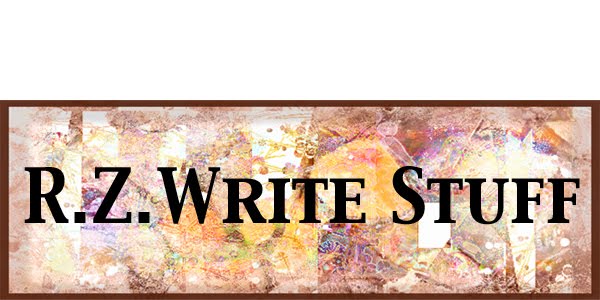 Cave Drawing #3. By Ruth Zachary.
Cave Drawing #3. By Ruth Zachary.THE SELF-EDITING CHECK LIST
√Shorter is better. Keep the reader’s attention. If a poem is longer than one page, break it up.
√Clarity of meaning. Put the work aside for a few days. Read it aloud to someone. Problems are more visible. Also present the story or evolution in chronological order. Using the correct sequence is less confusing to readers.
√Time elapsed in the poem's subject - a short soundbite in time is better than an epic, both in relating an incident and the sequence of events leading to it. Again, be concise.
√Specificity. Use details that are unique to the situation, and avoid generalized language.
√Use sensory appeal, sight, sound, smell, etc.
√Voice: select one point of view, one tense. Speak in a unique voice. Dialects are allowed if consistent with the character relating the information.
√Metaphor. Try to incorporate 3 metaphors, or one extended metaphor.
√Show, don’t tell. The setting, imagery, and language must bespeak the emotion and conclusion. Use active verbs which create an image. Lead the reader to your conclusion, rather than verbalizing the point.
√Avoid sentimentalism (observe without emotion even if is a very emotional subject. Defuse emotion by telling it as a second person viewer might.
√Unique wording ( omit cliches) Dare new word use. Be outrageous.
√Avoid conceptual words. (words rhat refer to thought, or long, technical words.)
√Listen for music and rhythm when your writing is read aloud. Internal rhymes contribute, end rhymes only sometimes do. Refrains repeat for the music or rhythm and emphasis to make a point. Remove redundant words and phrases if they don’t contribute to your writing. Replace words with better ones if possible.
√Double check your own spelling and punctuation, unless you are purposely avoiding conventions. Some publishers don’t respect this choice, even after 70 or more years of innovative forms.
√Create new structural forms. Respect white space between Lines. Consider conversational line breaks, or punctuation breaks. If using traditional forms, try to make the language flow naturally. Be innovative in other ways.
√Add your own points to this list for self-editing your own work.
√Shorter is better. Keep the reader’s attention. If a poem is longer than one page, break it up.
√Clarity of meaning. Put the work aside for a few days. Read it aloud to someone. Problems are more visible. Also present the story or evolution in chronological order. Using the correct sequence is less confusing to readers.
√Time elapsed in the poem's subject - a short soundbite in time is better than an epic, both in relating an incident and the sequence of events leading to it. Again, be concise.
√Specificity. Use details that are unique to the situation, and avoid generalized language.
√Use sensory appeal, sight, sound, smell, etc.
√Voice: select one point of view, one tense. Speak in a unique voice. Dialects are allowed if consistent with the character relating the information.
√Metaphor. Try to incorporate 3 metaphors, or one extended metaphor.
√Show, don’t tell. The setting, imagery, and language must bespeak the emotion and conclusion. Use active verbs which create an image. Lead the reader to your conclusion, rather than verbalizing the point.
√Avoid sentimentalism (observe without emotion even if is a very emotional subject. Defuse emotion by telling it as a second person viewer might.
√Unique wording ( omit cliches) Dare new word use. Be outrageous.
√Avoid conceptual words. (words rhat refer to thought, or long, technical words.)
√Listen for music and rhythm when your writing is read aloud. Internal rhymes contribute, end rhymes only sometimes do. Refrains repeat for the music or rhythm and emphasis to make a point. Remove redundant words and phrases if they don’t contribute to your writing. Replace words with better ones if possible.
√Double check your own spelling and punctuation, unless you are purposely avoiding conventions. Some publishers don’t respect this choice, even after 70 or more years of innovative forms.
√Create new structural forms. Respect white space between Lines. Consider conversational line breaks, or punctuation breaks. If using traditional forms, try to make the language flow naturally. Be innovative in other ways.
√Add your own points to this list for self-editing your own work.


No comments:
Post a Comment